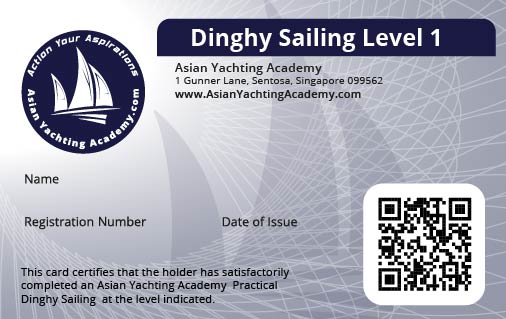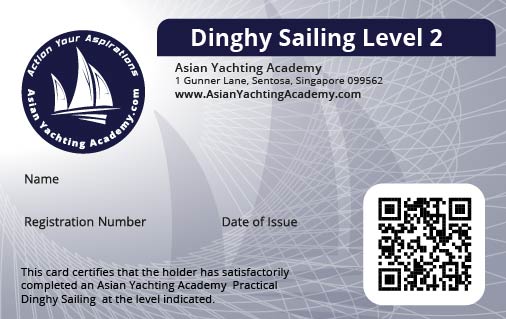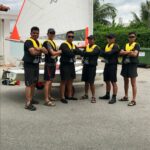Experience required prior training: None
Certification required prior training: None
Who can run the training: ISSA Instructor or minimum Offshore Skipper
Who can do the examination: ISSA Instructor or minimum Offshore Skipper
How to submit the application: Only through authorized ISSA school
Skills and knowledge required for a Dinghy Level 1 Single Sail , Single Crew eg Optimist

1. Can sail a dinghy, without an instructor, in light winds.
2. Knows the Collision Regulations.
3. Wears appropriate clothing and buoyancy.
4. Can rig, reef, and launch a dinghy.
5. Can balance the boat, a) using body weight b) using the sheet.
6. Can identify reaching, can turn, and ‘slalom’ back to departure point.
7. On a reach, can accelerate and decelerate with the sheet only.
8. Can accelerate and decelerate with the tiller, trimming sails appropriately.
9. Can sail close-hauled, and tack.
10. Running: can balance the boat using the tiller, and can gybe.
11. Can stop the boat on a reach, close-hauled, and from a run.
12. Can prepare for towing.
13. Can recover a capsized dinghy.
14. Can tie a figure of eight knot, and a round turn & two half hitches.
15. Knows about weather forecasts, and sail aerodynamics.
Skills and knowledge required for a Dinghy Level 2 Multi Sail, Multi Crew
1. Can plane a dinghy, in moderate wind and wave conditions.
2. On a run, can maintain a constant angle of heel without body movement, spinnaker (optional) correctly trimmed.
3. Can reach with a constant angle of heel.
4. Can trapeze and hike smoothly.
5. Can stop, reverse 2 boat lengths, and re-start on a pre-determined tack.
6. Can tack and replicate trim and heel.
7. Can gybe reach to reach with spinnaker (optional)
8. Can beat within a corridor.
9. Can tie a bowline and heat seal rope ends.
10. Can recover an inverted dinghy.
11. Can release a trapeze harness
12. Can reduce sail afloat.
13. Can interpret weather forecasts.
14. Knows about, points of sailing, buoyage, lee shores, tides, overhead power lines, anchors, boat maintenance.
15. Plus level 1 criteria

Skills and knowledge required for a Dinghy Level 3 Spinnaker / Racing Crew eg Laser 2000

1. Can plane a dinghy in strong wind conditions.
2. Can tune a dinghy, centreboard, mast rake, vang, Cunningham, outhaul, barber haulers.
3. Can roll tack and gybe
4. Can sail backwards.
5. Can sail without a rudder.
6. Can detect wind shifts.
7. Can mark round accurately.
8. Able to start at correct end of line.
9. Can cover and lee bow another dinghy
10. Can determine local weather patterns and wind strategy.
11. Knows Sailing Instructions, and the Racing Rules of Sailing.
12. Plus levels 1 & 2 criteria
NOTE: The ISSA standards are written in the form of competences, they are generic, and for guidance only. They exist in order to provide a simple method by which sailing certificates can be compared, to give guidance to organisations developing new certification schemes, and to establish standards for teaching and safety in sailing schools.





